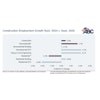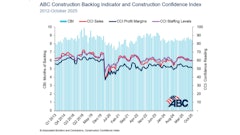
If you have not considered which of your employees may be ready for advancement, now is the time to think about it. Remember, seasoned talent from outside the company is scarce so it is best to develop your current people as much as possible. Companies who do this well have better financial returns than those who do it poorly. The question is what goes into an employee promotion plan?
Companies often call this type of plan a succession plan which establishes a process for recruiting employees, developing their skills and abilities, and preparing them for advancement, while retaining them to ensure a return on the organization's investment. Succession planning involves:
- Understanding the organization's long-term goals and objectives.
- Identifying the workforce's developmental needs.
- Determining workforce trends and predictions.
- Being aware of the skills and experience of current employees.
- Considering the impact not promoting would have on the current workforce.
- Analyzing the cost of recruiting and training.
In the past, succession planning typically targeted only key leadership positions. In today's organizations, it is important to include key positions in a variety of job categories and levels such as technicians, foremen, supervisors and managers. There are ten factors to consider before promoting anyone:
- Develop a profile of key positions by benchmarking the job required competencies.
- Identify the skills and experience of current employees.
- Identify who in the organization is fit to be promoted. Ideally, having more than one good person available for a key job is important. Success happens most often when there are choices between two or more qualified people.
- Encourage employees to grow by attending workshops and/or seminars, individually or as a team. Have them to share with the organization what they have learned and how it could benefit the company. If they aren't willing to develop they aren't promotion material.
- To further determine their chances for success in a management position, the employee should be expected to interview with top management and should be put through the paces to isolate behavioral tendencies that will give some indication about how they will handle various management situations. And the employee should be tested and assessed with professional assessment tools to determine the degree to which they match the profile of a manager/supervisor.
- Have the candidate engage in the tasks of leadership to see what results they produce before you offer them a promotion. Job assignments prepare candidates for their new positions, as compared to a sink-or-swim approach.
- Make sure everyone in your firm knows the parameters for promotion. Then monitor how employees match up, be it in formal annual reviews or on an ongoing basis as the situation dictates. Encourage your people to suggest others in the company they think fit those guidelines. It's important to have an open dialogue on an ongoing basis so that everyone knows where he or she stands pretty much all the time. Annual reviews are a good time to discuss promotion opportunities and reinforce criteria. It also gives employees who do not wish to be promoted a chance to indicate they don't want to be promoted, without embarrassment. Not everyone wishes to be a leader, nor can everyone be promoted.
- Track the progress of individual participants by using meaningful employee appraisals and feedback.
- Be aware of where there are shortages or gaps in talent and rectify these gaps quickly.
- Walk the Talk! Make sure your incentives and bonuses are tied directly to the parameters for promotion. If they are not evaluated and compensated this way, people will not view the parameters as being meaningful.
Another factor to remember is that moving from buddy to boss isn't a transition that everyone can make. So make it clear to any candidate for a promotion that he or she is going to have to adjust to a whole different set of professional and social demands. Before promoting someone, ask them if they think they'll be able to objectively critique somebody with whom they used to work.
With good succession planning, employees are ready for new leadership roles as the need arises and when someone leaves. In addition, succession planning can help develop a diverse workforce, by enabling decision makers to look at the future make-up of the organization as a whole.
Linda Hanson, CMC, is a certified management consultant and author of 10 Steps to Marketing Success. She writes, speaks and consults on marketing, management and customer service issues and can be contacted at www.llhenterprises.com. Sign up for her free newsletter The Superior Performance Report.















